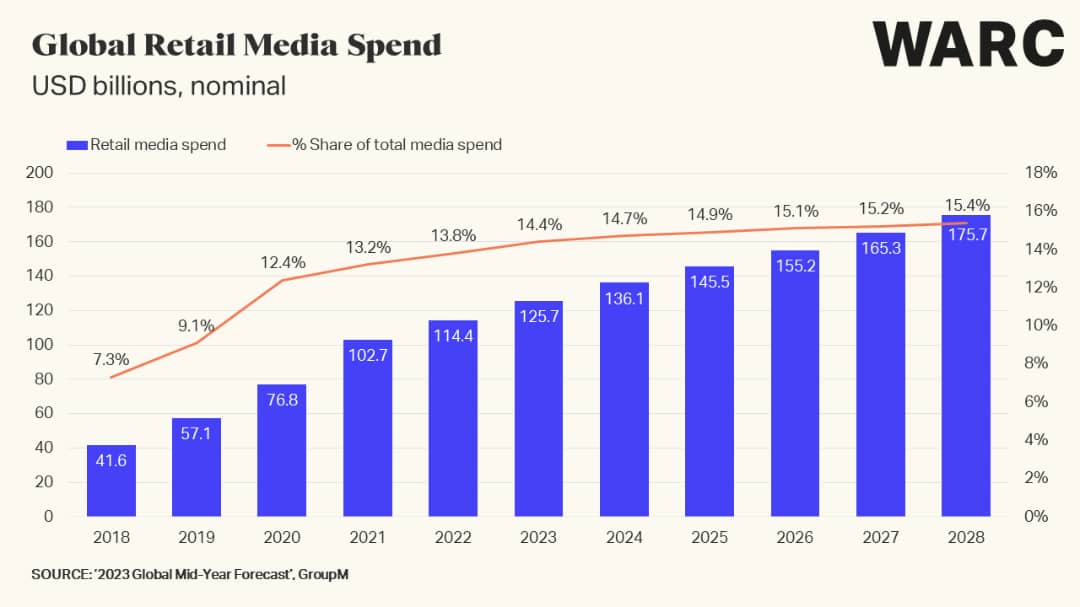The global retail media market is gathering remarkable momentum, with ad investment projected to surpass $200 billion by 2027, according to a new report by WARC.
WARC’s latest study, The Future of Commerce Media 2025, reveals that this booming sector is now transitioning from rapid growth to maturity, as brands consolidate budgets across fewer retail media networks. The report notes that the rate of sponsored search spending has started to slow, signalling a shift in strategy among advertisers.
The research forecasts that global retail media spend will rise to $196.7 billion by 2026, overtaking combined linear and connected TV ad spending next year. This marks a dramatic evolution for the sector, which accounted for just a quarter of total TV investment as recently as 2019.
However, WARC highlights that topline growth is beginning to cool. After peaking at 38.6% in 2021, expansion slowed to 13.7% in 2025 and is expected to ease further to 11.6% by 2027.
Meanwhile, 40% of agency-side buyers now view retail media as a full-funnel solution, while another 7% see potential in upper-funnel applications. WARC estimates the total addressable market for agentic commerce will hit $136 billion by 2025.
The report also predicts that worldwide investment in Retail Media Networks (RMNs) will climb to $174.9 billion this year, up 13.7% year-on-year, and grow another 12.4% in 2026 to reach $196.7 billion, representing 16% of all ad spend globally.
James McDonald, WARC’s Director of Data, Intelligence & Forecasting, noted that retail media is evolving beyond its original purpose.
“Retail media is rapidly transforming from a lower-funnel, search-dominated channel into a full-funnel proposition. Display advertising currently represents less than 30% of total on-site retail media spend, but this balance will shift as retail media becomes more integrated with brand digital budgets,” McDonald explained.
He added that the rise of agentic AI could reshape the ecosystem entirely.
“Much may depend on how quickly agentic AI gains adoption, as it could disrupt the high human traffic volumes that have driven retail media monetisation so far,” he said.
Retail media is now expanding beyond sponsored search into visual, audio, social, and TV partnerships, creating new opportunities—and challenges—for advertisers seeking brand clarity and contextual relevance.
Amazon continues to dominate the category, accelerating growth through full-funnel expansion and demand-side platform (DSP) partnerships. At the same time, AI-powered agentic commerce is emerging as the next major phase of innovation, with a potential market value projected to reach $1.7 trillion by 2030.
While retail media ad spend is on track to surpass TV advertising in 2026, growth from endemic brands has started to slow. The tech and electronics sector remains the largest contributor, but fresh momentum is now coming from display ads, off-site formats, and fast-growing quick-commerce platforms such as Instacart, Uber, Delivery Hero, and DoorDash.
As the market matures, scale and selectivity are becoming decisive factors for brands and retail networks alike. To unlock retail media’s full potential across Connected TV (CTV), Digital Out-of-Home (DOOH), off-site, and in-store advertising, the industry must move beyond Return on Ad Spend (ROAS) and embrace new measurement frameworks that better capture cross-channel impact and brand lift.









Comment
No comments found.